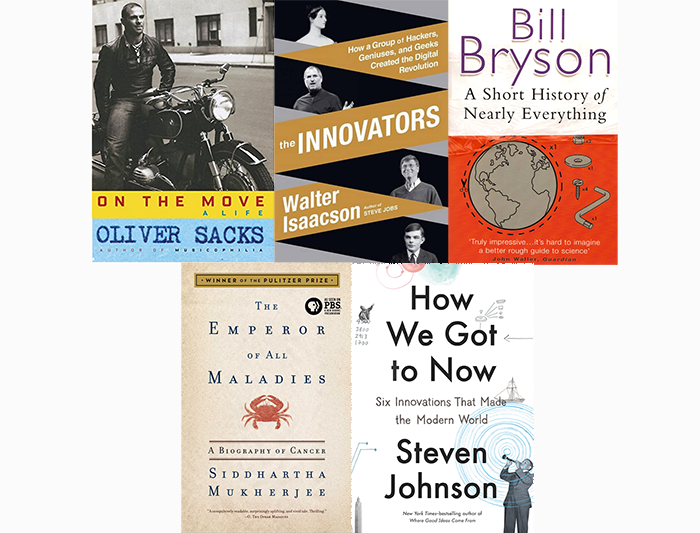School supplies are on sale again and it’s time to start planning for education domination. UT students who still have a little time on their hands can read these books to gain a better understanding of their place in science and technology’s history.
“A Short History of Nearly Everything” by Bill Bryson
Bill Bryson is a non-scientist who decided to write a book about science to fill in his own educational gaps. As a travel writer, he has an intuition for interesting details, beginning his book with mind-shattering descriptions of the size of everything from subatomic particles to the universe.
The midsection is filled with stories and descriptions of noteworthy scientists from the past 300 years, many of whom had eccentricities, quarrels and relationships so strange a fictional work about them would seem implausible.
By the book’s end, Bryson muses on the possibility of future natural disasters. “A Short History of Nearly Everything” is at once humbling and empowering — it gives vivid descriptions of how miniscule people and our lifespans are, as well as the unlikelihood of life existing at all.
“The Innovators: How a Group of Hackers, Geniuses, and Geeks Created the Digital Revolution” by Walter Isaacson
“The Innovators” covers the history of computers and the Internet through the stories of characters ranging from Ada Lovelace to Steve Wozniak. Isaacson traces the interweaving biographies of these visionaries and discusses how they fought, formed friendships, collaborated and stole from each other.
Throughout the book, Isaacson pushes the theory that the most groundbreaking discoveries of the digital age were made by groups of complementary talents, not lone geniuses. His focus on the relationships and personalities behind the machinery make for a compelling read.
“On the Move: A Life” by Oliver Sacks
The life of neurologist Oliver Sacks spans different eras in history and medicine, from his childhood in Blitz-era London to his pharmacological experiments in the ’60s to his old age as a physician and writer. The story of his life is beautifully detailed, but more interesting are his musings on discoveries about the brain that were made in his lifetime.
This is shown by his poetic thoughts on the theories in his friend Gerry Endelman’s book “Neural Darwinism: the Theory of Neuronal Group Selection”: “There is no final or “master” interpretation; the music is collectively created, and every performance is unique.
This is Edelman’s picture of the brain, as an orchestra, as ensemble, but without a conductor, an orchestra which makes its own music.” Sacks was diagnosed with terminal cancer earlier this year, and his biography amplifies the piercing loss of a brilliant man.
“The Emperor of All Maladies: A Biography of Cancer” by Siddhartha Mukherjee
In an interview with the New York Times, oncologist Mukherjee said he wrote “The Emperor of All Maladies” in order to explain to his patients what they were up against.
This explanation eventually evolved into a biography of cancer, the physicians that pushed the boundaries of human existence — their own and their patients — in order to make progress in cancer treatment and the ramifications of the disease throughout medicine and history.
The further readers gets into this tome, the more they realize the hopeless simplicity of the much-vaunted ambition to “cure cancer.”
“How We Got to Now: Six Innovations That Made the Modern World” by Steven Johnson
The average person may not expect the transportation of ice to the southern United States to be a turning point in American history, but in the first few chapters of “How We Got to Now,” the book clearly shows how ice led to people’s immigration to warmer climates and influenced modern medicine.
The book is full of fascinating historical connections, such as the relationship between the development of jazz in the twentieth century and the current lack of female children in China. Readers can begin peeling back the edges of modernity to explore its complicated and fascinating history.

























